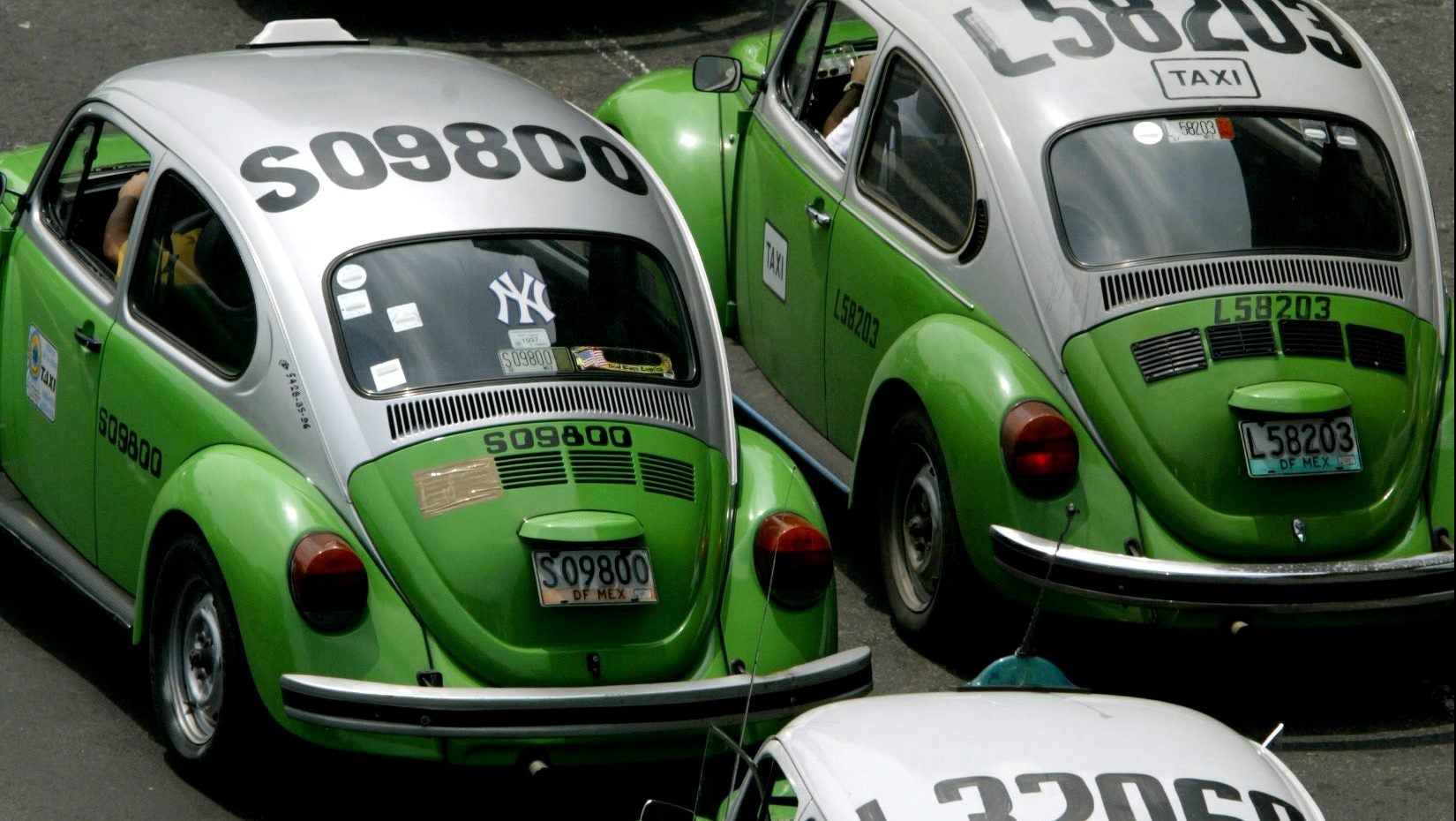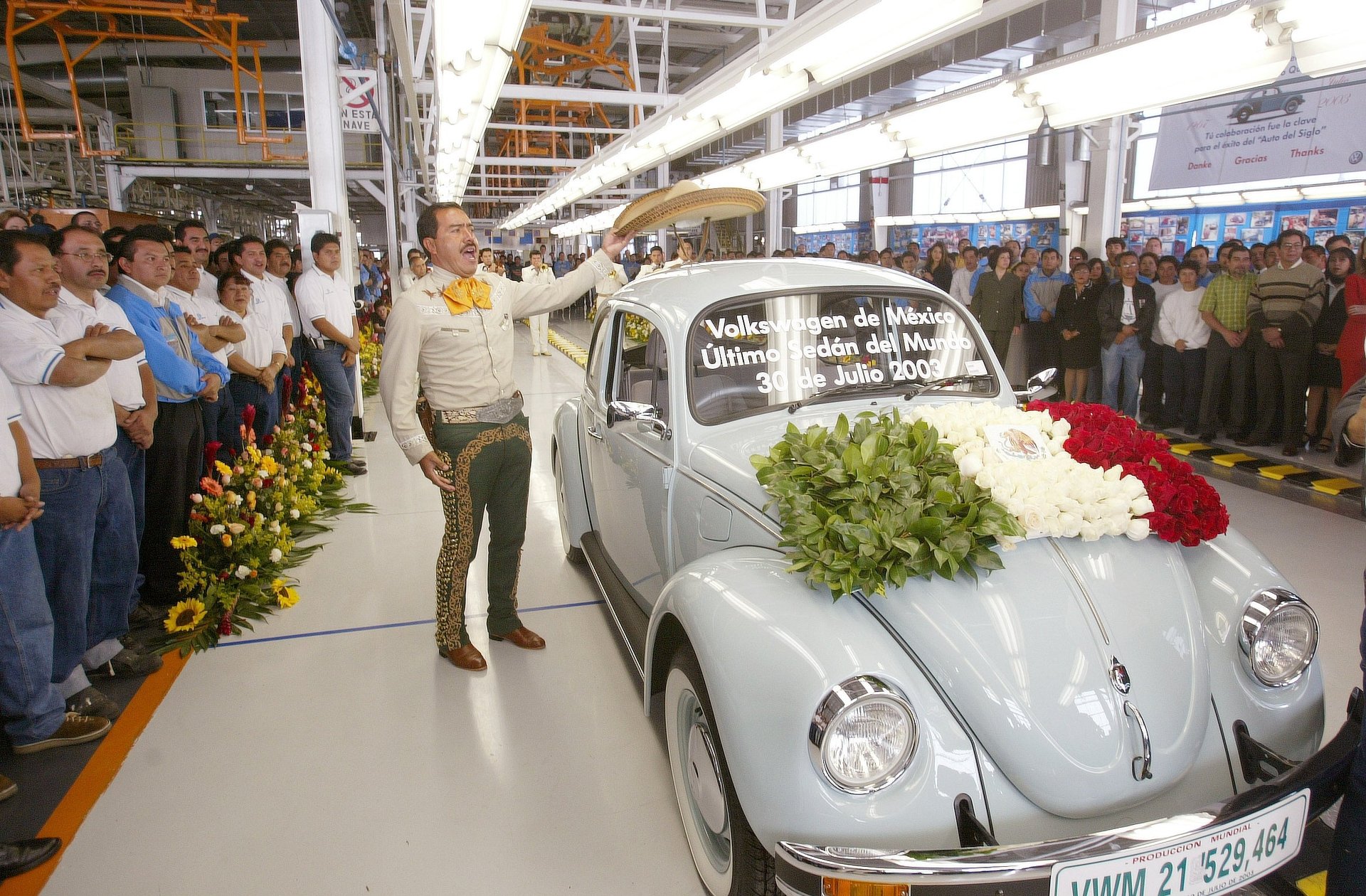In its later years, the VW Beetle was kept alive by Mexico’s taxi drivers
One of the world’s most iconic cars, the Volkswagen Beetle, is no more.


One of the world’s most iconic cars, the Volkswagen Beetle, is no more.
The last of Volkswagen’s modern “Bugs” rolled off an assembly line in Puebla, Mexico on Wednesday (July 10). The final vehicle, painted stonewash blue, will be parked in a local museum. Then, after more than 80 years, Volkswagen won’t produce the Beetle—in any form—anywhere in the world.
The Beetle’s demise was a long time coming. In fact, Volkswagen stopped producing the original, Type 1 Bug in Germany in 1978. But in Mexico, the quirky, barebones vehicle, which locals call Vocho (or Vochito), lived on at the Puebla factory until 2003. The more expensive, modern Bug—the one discontinued this week—didn’t catch on in quite the same way.
It might seem odd that a German car drove itself into Mexico’s heart. However, the classic Beetle’s simple design and inexpensive upkeep made it a practical choice for many. “[I]t was appealing not only for sentimental reasons but also because it was affordable, parts were cheap, and mechanically, it was easy to comprehend and fix,” explained a 2003 eulogy for the original Bug in Car and Driver. “As such, it was popular with companies that purchased the Vochito as a fleet car.”
In addition to finding favor among Mexico’s taxi drivers, the original VW Beetle also enjoyed strong support from the government. By granting Volkswagen tax breaks in 1988, the Mexican government got the company to cut the Type 1’s price by 20%, making it even more affordable. Beetle sales tripled between September 1988 and the first quarter of 1989, and VW’s overall share of passenger cars in Mexico grew from 28% to 40%.
Over the next decade, though, the Bug gradually took a back seat. Rivals like Nissan offered vehicles with better handling, as well as more power and space.

By 2003, the end of the road was in sight. Although Bugs accounted for a sizable portion of Mexico City’s taxicabs, the government feared they were unsafe. “For a time, in the 1990s and early 2000s, the taxis were notorious as a robbery trap,” explained The Telegraph. “Because there were only two doors, muggers or kidnappers could push their way through the passenger door, leaving the passenger no way to escape.”
As Mexico City’s government required cabs to have four doors, the Beetle fell out of favor. The cars produced in 2002 were given a 10-year reprieve, but the damage was done. “Green-and-white painted Type 1’s used to be the norm for taxis in Mexico City,” reported the Associated Press, “but authorities ended cab licenses for the last of the ‘vochos’ in 2012.” The Bug was on its last legs.
Though the Beetle officially died on July 10, 2019, its final form—a modern, sleeker reboot dubbed the “Final Edition”—was a departure from the model that became so popular in Mexico. “The Beetle shouldn’t be a $23,000 to almost $30,000 car, like this Final Edition is,” a Bug reviewer wrote last year. “It should be one of the most charming, useful, and cheapest things you can get.”